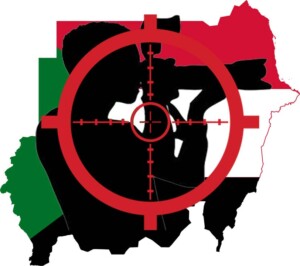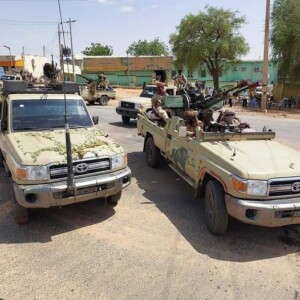Sudan doctors: 58 injured in ‘November 17 massacre’ anniversary demos
The Central Committee of Sudanese Doctors (CCSD) announced on Friday, that 58 people were injured during Thursday’s November 17 anniversary protests, marking one year since 16 peaceful demonstrators were killed by junta forces.
 Police shooting during 2021 November 17 Marches of the Millions (social media)
Police shooting during 2021 November 17 Marches of the Millions (social media)
The Central Committee of Sudanese Doctors (CCSD) announced on Friday, that 58 people were injured during Thursday’s November 17 anniversary protests, marking one year since 16 peaceful demonstrators were killed by junta forces.
The doctors reported that protesters suffered a range of injures, including nine cases of stun grenade related injury, one person who sustained a serious eye injury after being shot by a rubber bullet, and one case of a protester being run over by a junta vehicle.
The CCSD report stated that the majority of the injuries people suffered were from tear gas related injuries, as well as various projectiles being thrown at protesters.
According to the committee, some of the cases “required surgical intervention”, but all those who were wounded are reported to be in “stable condition”
November 17 massacre
Demonstrators took to the streets in Sudan’s capital on Thursday to mark the one-year anniversary of the November 17 massacre, where at least 16 people were killed, and more than 100 others were injured.
On November 17 last year, the Resistance Committees of Khartoum North (Bahri) called for people to participate in a Marches of the Millions, and were met with a particularly heavy military and security presence. 11 of the demonstrators who died that day, were located in Khartoum Bahri.
In a statement published on Wednesday, the CCSD extended their “deepest condolences”, sending messages on the encrypted messaging service Telegram to the families of those who lost their loved ones during the Bahri massacre.
The CCSD stated that those who died in Bahri possessed a “rare courage and historical steadfastness”, adding that “peacefulness is always stronger than bullets”.
The doctor’s organisation also said in their statement that they encouraged those protesting on this anniversary and would lend their support by covering hospital emergencies in order to provide medical services “to those who need it”.
November 17 witness reports
Witnesses told Radio Dabanga that forces shot protesters directly in the upper parts of their bodies with the intention to kill during the violent repression in Bahri last year. Various activists went missing and large numbers were arrested and detained are being held in unknown detention locations. Journalists were targeted too.
Hospitals were besieged and stormed by security forces who fired tear gas, preventing ambulances from reaching the wounded and preventing the wounded from reaching hospitals in Khartoum North (Bahri) and Omdurman. Electricity was also cut off while surgeries were performed on the injured.
Activists further reported that the security forces pursued injured people inside the International Hospital, prevented them from obtaining medical care, and detained several of them.
The same happened in Omdurman at the El Arbaeen Hospital and Waad Hospital, not far from El Ahfad University for Women, according to witnesses.
The activists mentioned seeing several bodies in Waad Hospital that have not been listed in the casualty reports yet. They also said a larger number of protesters were shot.
One of the witnesses told Radio Dabanga that he personally carried four wounded people to Waad Hospital.
According to activists, ordinary police, riot police, paramilitary Central Reserve Police Forces, security forces, other military forces, and plain-clothed individuals were involved in the violence against demonstrators.
Journalist Khaled Fathi reported on his Facebook page that “the battle in Khartoum North began at 13:00 in the Bahri El Muasasa area when police forces, members of the Central Reserve Police Forces, and other militiamen came with their weapons, carrying orders from their leaders to kill the people”.
“The forces used live ammunition, rubber bullets, and tear gas as they unleashed their force, raiding homes, and searching and detaining people. This amounted to crimes of enforced disappearance and brutal beating without being bound by any law or moral scruple.”











 and then
and then